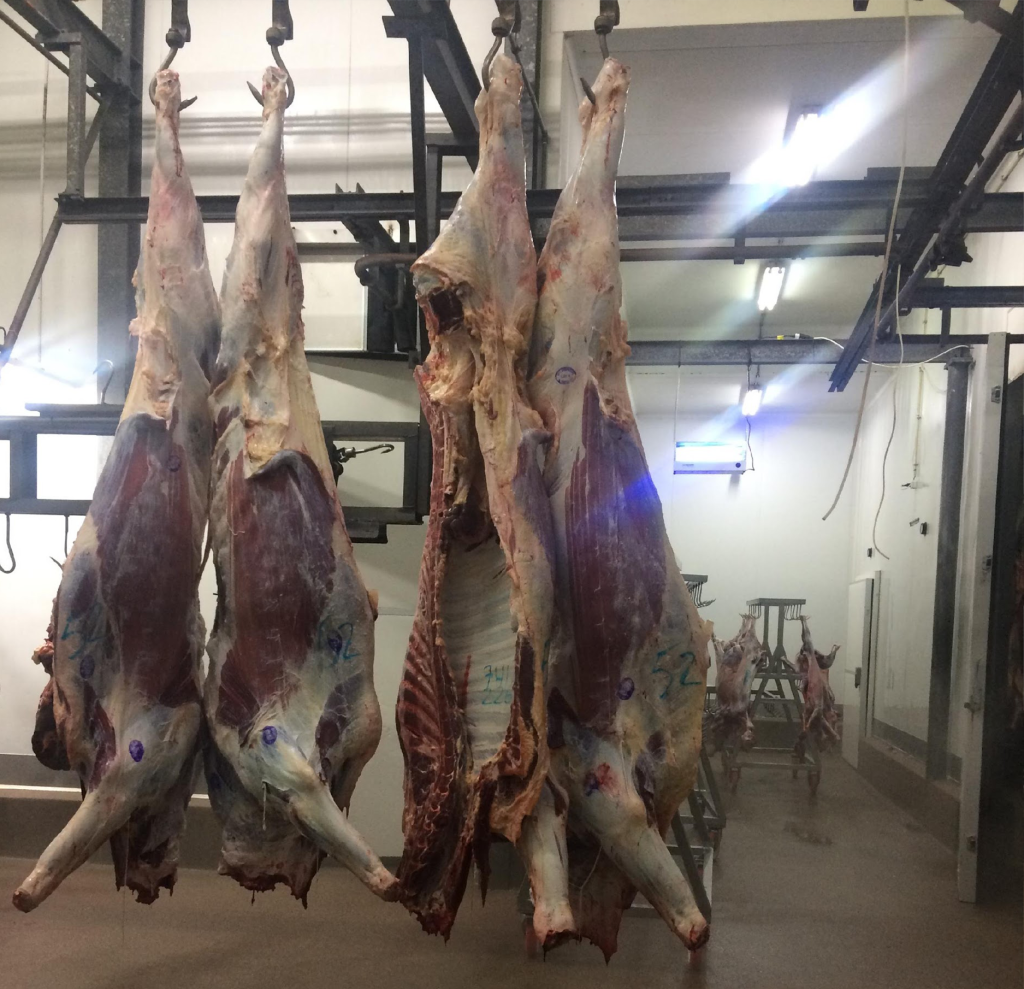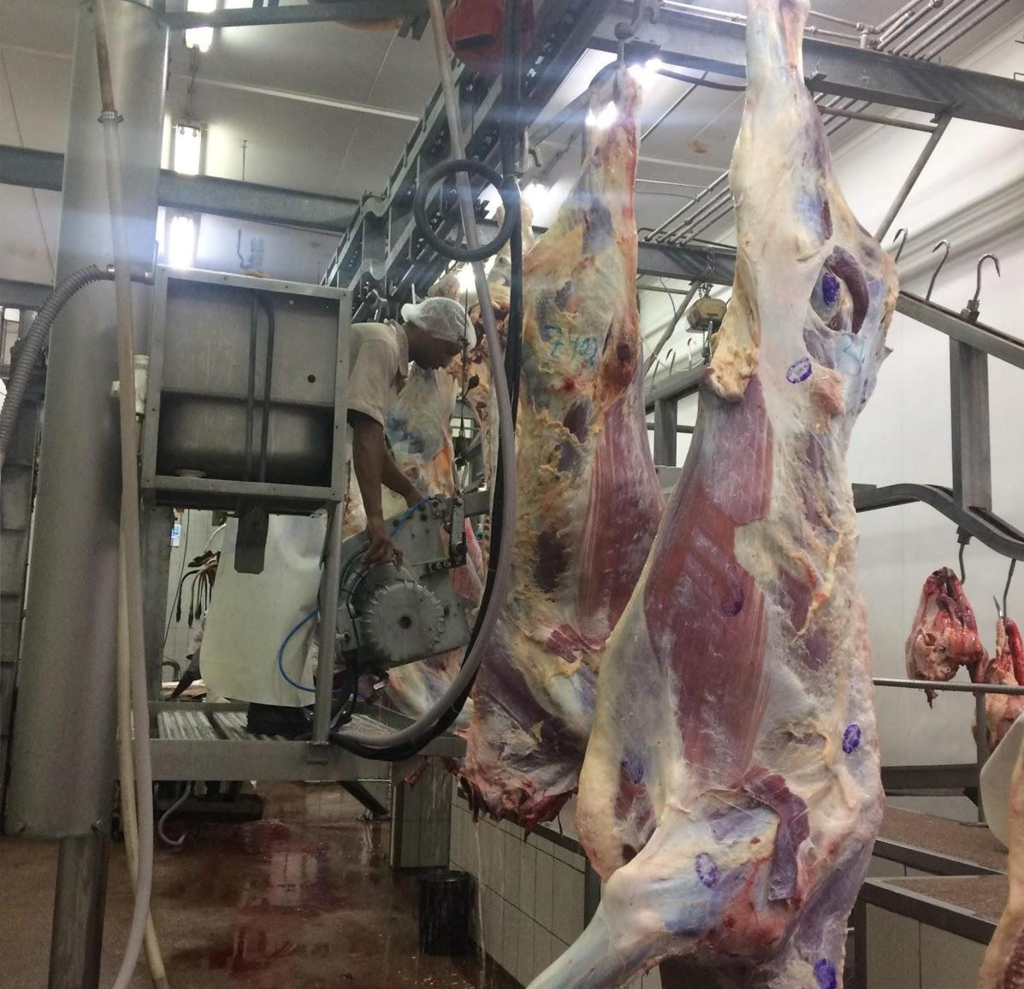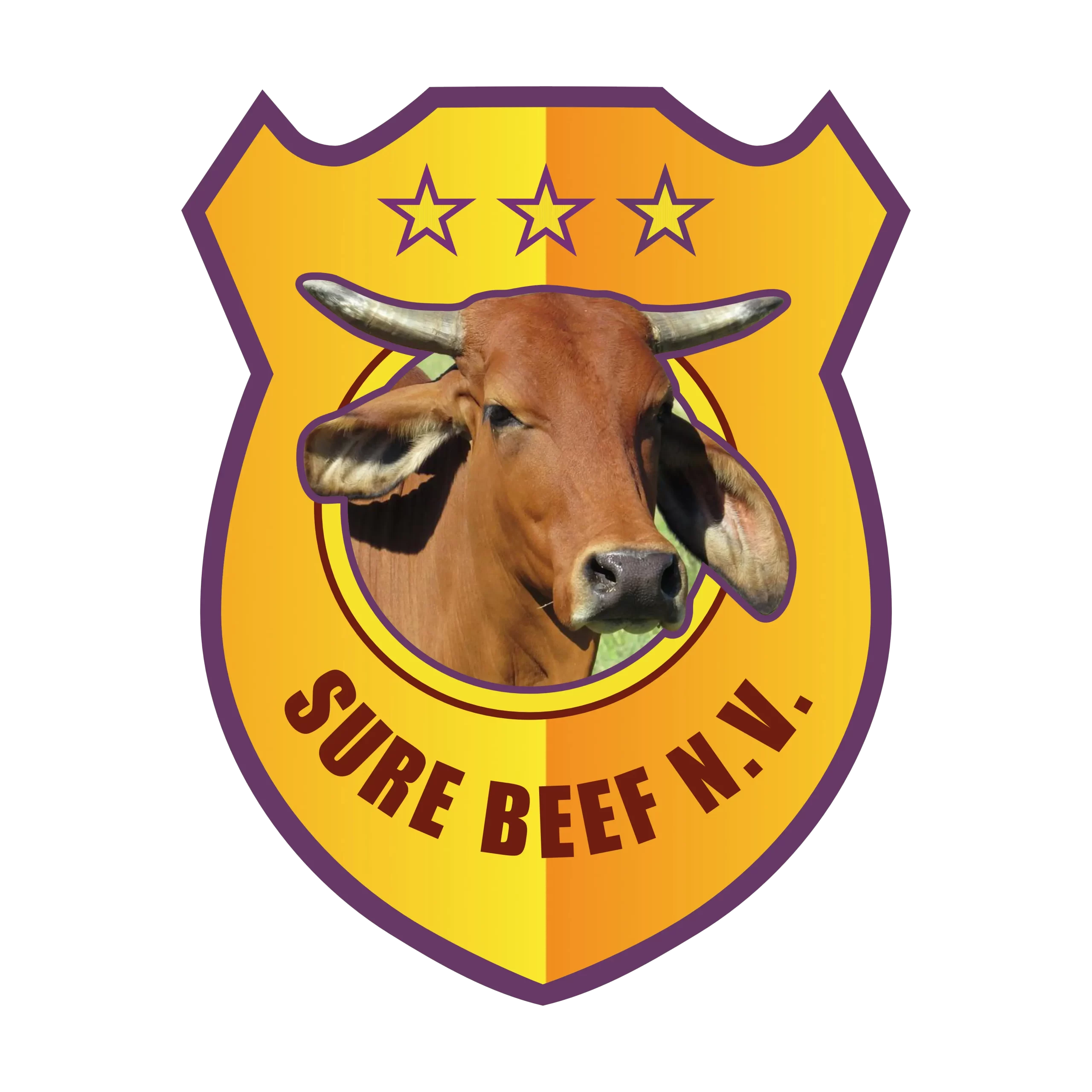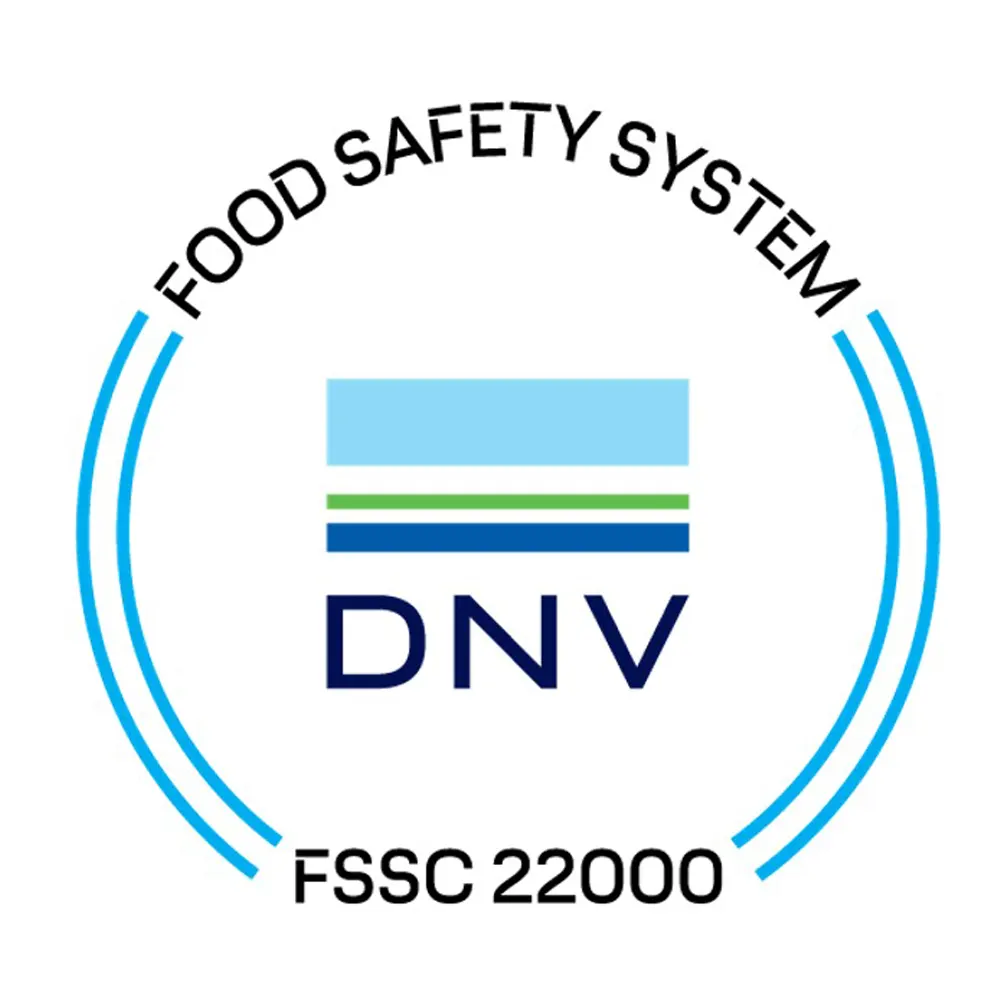
The slaughter process
1. The regular slaughter days of Sure beef N.V. are Mondays and Thursdays, therefore the Livestock supplied by the supplier is only slaughtered on one of these days, with the exception of emergency slaughter, at the discretion of Sure beef N.V.
2.Before proceeding to slaughter, the cattle are subjected to a live inspection by the inspectors of the veterinary inspection of the Ministry of L.V.V.
3. The neck cut is applied by an employee certified by the SMA (Surinamese Muslim Association). This is how the cattle are killed. The dead cattle are then updated on the slaughter list through registration of the ear number.
4. When removing the lower legs, each lower leg is marked with its serial number of entry.
5. When the hides are skinned, the ear number is removed and copied onto the hind legs of the carcass with a meat writing pencil.
6. White organs: when removing the gastrointestinal package, the sequence number is set using a string tied at the end of the rectum. This serial number is also written on the rumen and book stomach. These white organs then go to the intestinal wash where they are washed clean. After approval, the intestines are placed in the rumen with the corresponding serial number and hung on a hook with the corresponding serial number, on the white organ rack.
7. Red organs: The head is marked with the butcher code using a meat-writing pencil. After approval, the whole is hung on a rack with the corresponding serial number.
8. The product is inspected after the slaughtering process. If the carcass is approved, it is stamped together with the corresponding organs and the carcass is weighed up. The administrative recording takes place and is checked with the removal notes. If there is any doubt about the soundness of the carcass, it and associated organs will be held for further examination. The carcass and attachments are stored in separate cold storages and if necessary meat and organ samples are taken for laboratory testing. Depending on the final result, the action is then taken on behalf of the veterinary inspection, after which the administrative recording takes place.
9. The organs and carcasses are then stored in separate refrigerators.


The slaughter process in case of emergency slaughter
Emergency slaughter is the slaughter of healthy livestock that has had an accident and therefore, for welfare reasons, can be transported to Sure beef N.V. alive or not, with the intention of immediate slaughter and/or further processing.
To be able to proceed to emergency slaughter, the livestock must meet the two following conditions:
1. The animal must have had an accident
An accident is a sudden, unforeseen, or unexpected event that causes physical damage or injury to the animal. An accident requires immediate action by the person in charge of the animal. An accident includes the following:
- an accident assumes:
- a sudden unforeseen or
- unexpected event;
- the existence of a physical injury;
- a causal relationship between the accident and the injury (maximum time between accident and moment of death: 3 × 24 hours).
The definition and the constitutive elements make it possible to distinguish between an accident and a disease: the injury resulting from an accident must not be the endpoint of slow deterioration in health status but must be the result of a short period of time, event, effort, or action localizable in a particular space. Examples of injuries as a result of an accident:
- flesh wounds with loss of tissue that lead to (partial) immobility;
- fractures; severe open wounds; traumatic amputations;
- internal injuries due to mechanical violence that, in the absence of treatment, can be life-threatening or that make animals (partially) immobile;
- harmful effects of exposure to electrical voltage difference that gives rise to (partial) immobility (electrical current, lightning);
- burns;
- acute threat of suffocation (as a result of obstruction of trachea/threat of drowning/gases);
- birth injuries (muscle tear, (nerve) contusion, fresh prolapse of anus/rectum/vagina/uterus, hole in the uterus, etc.).
2. The animal must be healthy at the time of the accident
the animal must not suffer from or be suspected of suffering from an illness (fever!);
the animal must be free from drug residues. Waiting times must be respected;
only healthy animals may be delivered to Sure beef N.V, insofar as this can be assessed by Sure beef N.V.
Delivery / Pick-up
Cold storage opening hours:
- Monday to Thursday from 07:00 hrs. till 14:00 hrs.
- Friday from 07:00 hrs. till 13:30 hrs.
- Saturday: Open by appointment only
- Orders are collected by the customer as soon as possible after payment or delivered by Sure beef N.V. to the delivery address and date specified by the customer.
- Vehicles and meat boxes must meet the requirements set by the veterinary inspection for the transport of meat products.
- When the products are delivered by Sure beef N.V., the meat is suspended and cooled free from the floor, in accordance with the standards within FSCC 22000, transported in a Sure beef N.V. refrigerated truck.
- The stated delivery time is only an indication, from which no rights can be derived.
- If unable to deliver the order, Sure beef N.V. will inform the customer as soon as possible.
- If the customer refuses or fails to provide information or instructions necessary for the delivery, the products intended for the delivery will be stored for a maximum of 3 days. After Sure beef N.V. has notified the customer, he is held accountable for risks. In that case, the customer owes all additional costs to Sure beef N.V.
- The customer is not entitled to any compensation in any form. If the specified delivery time is exceeded unless expressly agreed or if the exceeding is the direct and immediate result of gross negligence or intent on the part of Sure beef N.V.
- Cattle hides are not included in delivery and are the property of Sure beef N.V.
- The customer must take into account the privacy of suppliers and other customers when registering or administering livestock and meat products and provide them with enough space to make his / her declaration. Sure beef N.V. reserves the right to take corrective action in the event of a privacy violation.



